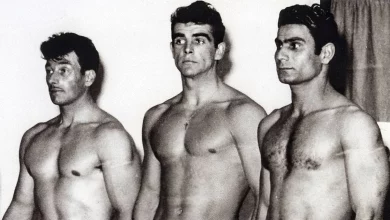Woke James Bond Nosedives at Box Office

The highly anticipated release of the 25th James Bond film, No Time to Die, has sparked both excitement and controversy among fans and film enthusiasts. However, the film’s opening weekend box office numbers fell far short of expectations, leaving many questioning the reasons behind its underperformance. In this article, we delve into the factors that contributed to the film’s lackluster reception, particularly its departure from the core elements that defined the iconic James Bond character and the introduction of woke elements. Additionally, we explore the audience’s reaction and discuss the potential implications for the future of the franchise.
Key Takeaways
- No Time to Die suffered from a disappointing opening weekend at the box office, failing to match the success of its recent Bond predecessors. The film’s departure from the charismatic and carefree nature of the character, coupled with the injection of woke ideology, generated controversy and alienated the core Bond fan base.
- The introduction of a black woman as 007 and the transformation of Q into a gay character sparked backlash from audiences, who felt that these changes were driven by political correctness rather than serving the narrative. The decision to label Sean Connery’s Bond as a rapist further undermined the film’s connection to its rich legacy.
- The film’s underperformance highlights the importance of striking a balance between honoring a franchise’s history and incorporating contemporary storytelling elements. The future of the James Bond franchise remains uncertain, but lessons can be learned from this misstep to ensure a more cohesive and engaging cinematic experience for audiences.
Why No Time to Die’s Woke Approach Failed to Impress Audiences
The highly anticipated release of No Time to Die, the 25th installment in the iconic James Bond franchise, has left both fans and industry insiders disappointed. Despite debuting on a record-breaking 4,400 screens, the film’s opening weekend box office earnings fell far short of its predecessors, signaling a significant decline in audience interest. With a lackluster $56 million opening, it’s clear that something went wrong. In this article, we’ll delve into the reasons behind the underperformance and explore how the film’s “woke” approach might have contributed to its downfall.
A Disappointing Opening Weekend
When comparing the opening weekend numbers, No Time to Die pales in comparison to its recent Bond predecessors. Films such as Spectre (2015) raked in $70.4 million, Skyfall (2012) earned a staggering $88 million, and even Quantum of Solace (2008) managed to exceed No Time to Die with $67.5 million. Surprisingly, the only film outperformed by No Time to Die was Daniel Craig’s first Bond outing, Casino Royale (2006), which earned $40.8 million.
Considering the film’s production budget of somewhere between $250 to $300 million, coupled with an additional $250 million spent on marketing, it becomes evident that No Time to Die needs to reach the billion-dollar mark just to break even. However, with the current worldwide earnings of $313 million, this seems like an insurmountable challenge.
The Woke Factor
While industry insiders scramble to find excuses for the film’s lackluster performance, it is essential to address the elephant in the room: the film’s woke approach. Director Cary Joji Fukunaga chose to take the franchise in a different direction, one that abandoned the core elements that made James Bond a beloved character.
Traditionally, Bond was a charismatic super-spy who lived life to the fullest, embracing a devil-may-care attitude. However, Daniel Craig’s portrayal has transformed Bond into a brooding and moody figure. This departure from the iconic character archetype was already met with mixed reactions from fans. Yet, it was the injection of woke ideology that truly pushed audiences away.
The decision to label Sean Connery’s Bond as a rapist, disregarding his significant contributions to the franchise, was seen as a blatant disregard for Bond’s rich legacy. Moreover, the announcement that a black woman would take on the role of 007 and the revelation that Q had become a gay character sent a clear message to audiences. It seemed that the filmmakers prioritized virtue signaling and pandering to the Woke Gestapo over delivering a compelling story and respecting the franchise’s history.
The Audience’s Reaction
Unsurprisingly, the introduction of these woke elements left audiences unimpressed. The idea of a black woman assuming the role of 007, while intriguing in its own right, felt forced and agenda-driven. Similarly, the sudden transformation of the beloved character Q into a gay individual seemed more like a box-ticking exercise than a genuine narrative choice.
Bond enthusiasts have long embraced the character’s escapism and larger-than-life persona, but No Time to Die stripped away those fundamental qualities. This departure left viewers feeling alienated and disappointed, as they had lost the opportunity to vicariously experience the thrill of Bond’s carefree and adventurous lifestyle.
A Flawed Farewell
No Time to Die was intended to be the grand finale of Daniel Craig’s tenure as James Bond, a film that would serve as the culmination of his era. However, the lack of affection and goodwill toward Craig’s portrayal of the character presents another obstacle to the film’s success. It is not the actor’s fault, but rather the producers’ decision to remove the fun and charm from the franchise, replacing it with a more somber and introspective tone.
While the disappointing box office results cannot solely be attributed to the film’s woke elements, it is clear that they played a significant role in alienating the core Bond fan base. Audiences have shown time and time again that they want to be entertained and immersed in thrilling stories, not subjected to political agendas or forced diversity for the sake of it.
FAQ:
1. What were the factors contributing to the underperformance of No Time to Die at the box office?
While several factors contributed to the underperformance of No Time to Die at the box office, one significant aspect was the film’s departure from the core elements that made James Bond such a beloved character. The decision to transform Bond into a brooding figure, deviating from his traditionally charismatic and carefree nature, failed to resonate with audiences. Additionally, the injection of woke ideology, such as labeling Sean Connery’s Bond as a rapist and introducing a black woman as 007, generated controversy and alienated long-time fans.
2. Did the film’s runtime impact its box office performance?
The film’s runtime alone did not have a significant impact on its box office performance. While No Time to Die has a runtime of 2 hours and 43 minutes, which some argue might deter audiences, it’s important to note that many successful films have similar or even longer runtimes. Ultimately, it is the overall quality of the film, coupled with the audience’s interest and reception, that determines its success at the box office.
3. Did the COVID-19 pandemic affect the film’s box office numbers?
The impact of the COVID-19 pandemic cannot be entirely dismissed, as it has had a profound effect on the film industry as a whole. However, it is crucial to recognize that other films released during the pandemic, such as Venom 2 and Shang-Chi and the Legend of the Ten Rings, achieved considerable success at the box office. Therefore, it would be inaccurate to solely attribute No Time to Die‘s underperformance to the pandemic, as there were other underlying factors at play.
4. Why did the woke elements in the film receive backlash from audiences?
The woke elements introduced in No Time to Die received backlash from audiences due to the perception of forced diversity and pandering. While inclusivity and representation are essential, it is crucial for filmmakers to strike a balance and ensure that these elements enhance the story rather than overshadow it. When it appears that these choices are driven by a desire for political correctness rather than genuine storytelling, audiences can feel alienated and disconnected from the narrative.
5. Were the changes in Bond’s character solely responsible for the film’s underperformance?
While the changes in Bond’s character played a part in the film’s underperformance, it would be an oversimplification to attribute the entire outcome to this factor alone. The reception of any film is influenced by a multitude of aspects, including marketing, competition, audience expectations, and the overall quality of the production. While some fans may have been disappointed by the departure from Bond’s traditional persona, it is important to consider the broader context in order to understand the film’s underperformance.
6. Will the franchise recover from this misstep?
The future of the James Bond franchise is uncertain following the underperformance of No Time to Die. However, the franchise has proven to be resilient in the past, bouncing back from setbacks and evolving with the times. In order to recover, the producers will need to reassess their approach, listen to audience feedback, and strike a balance between honoring the franchise’s rich legacy and adapting to contemporary storytelling expectations. Only time will tell if the franchise can regain the magic that once captivated audiences worldwide.
7. Were there any positive aspects of No Time to Die?
Despite its underperformance, No Time to Die still has its merits. The film boasts stunning cinematography, exhilarating action sequences, and solid performances from the cast. Additionally, it serves as a significant milestone in Daniel Craig’s tenure as James Bond and wraps up his story arc in a meaningful way. While the film may have fallen short in certain areas, it still offers elements that fans and cinephiles can appreciate.
8. Did the film receive any positive critical reviews?
While the film’s box office performance was lackluster, it did receive a mix of positive and negative reviews from critics. Some praised its technical aspects, performances, and emotional depth, while others criticized its pacing and storytelling choices. It is important to note that critical reception can vary, and individual opinions on the film may differ. Ultimately, the audience’s response and box office numbers provide a clearer reflection of its overall reception.
9. What lessons can be learned from the film’s underperformance?
The underperformance of No Time to Die offers several valuable lessons for filmmakers and studios. Firstly, it emphasizes the importance of maintaining a strong connection with the core fan base while exploring new creative directions. Additionally, it underscores the significance of delivering a compelling and cohesive narrative that resonates with audiences. Lastly, it serves as a reminder to approach inclusivity and diversity with care, ensuring that these elements enhance the story rather than overshadow it.
10. Will there be any future James Bond films?
Despite the underperformance of No Time to Die, it is unlikely that this will mark the end of the James Bond franchise. The character has endured for over six decades and has a dedicated global fan base. While the future direction of the franchise may be subject to reevaluation, it is expected that James Bond will continue to captivate audiences with new adventures and interpretations in the years to come.
Conclusion
The underperformance of No Time to Die at the box office serves as a wake-up call for filmmakers and studios, highlighting the significance of understanding audience expectations and staying true to the essence of beloved characters. Departing from the core elements that define iconic characters, such as James Bond, can result in alienating the fan base and diminishing the box office potential. While the introduction of woke elements and attempts at diversity and inclusivity are commendable, they must be handled with care to avoid overshadowing the storytelling and betraying the franchise’s legacy.
Moving forward, it is crucial for filmmakers to strike a balance between embracing new creative directions and maintaining a strong connection to the core fan base. By doing so, they can deliver compelling narratives that resonate with audiences, reignite their enthusiasm, and ensure the longevity of beloved franchises like James Bond. Ultimately, the success of future Bond films will rely on their ability to captivate audiences with thrilling stories, dynamic characters, and a touch of the classic charm that has made the franchise an enduring cinematic icon.
References:










One Comment